Charge lifepo4 batteries, you need to follow specific guidelines to guarantee safety and efficiency. Using the correct charger designed for lithium chemistry is important, along with adhering to voltage specifications. Begin with constant current charging before switching to constant voltage mode to avoid overcharging. Extreme temperatures can be detrimental, so it’s essential to monitor conditions carefully. Understanding these principles is significant, especially when it comes to maximizing battery life and performance. But what else should you know?
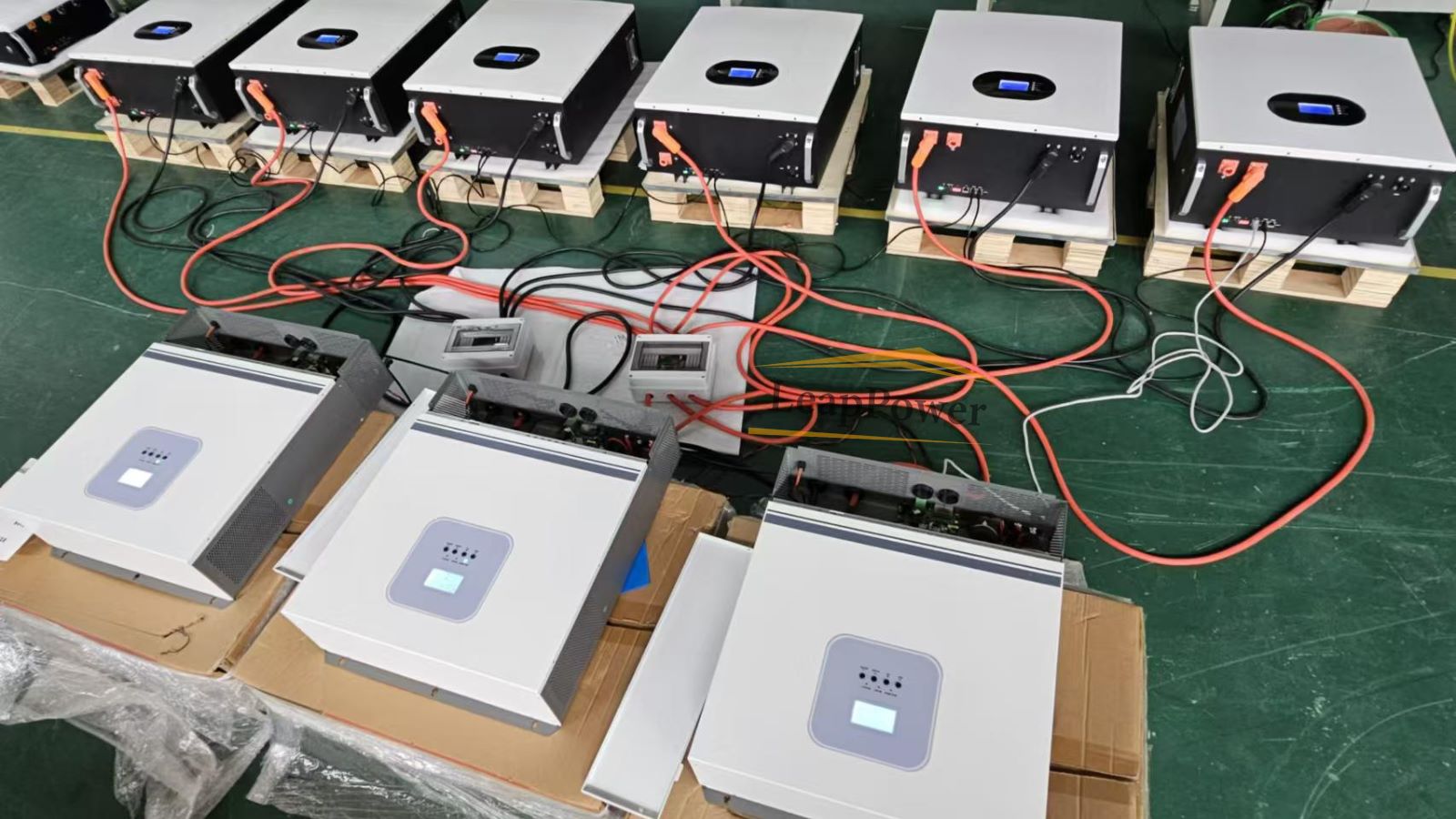
To charge lifepo4 batteries safely hinges on understanding the correct charge voltage. The nominal voltage of a single cell is 3.2V, but you need to charge it within the range of 3.50-3.65V.
For a 12.8V portable Battery, aim for a charge voltage of 14.4V, keeping it between 14.0V and 14.6V to avoid damage. Over-voltage can lead to cell degradation, inflation, or even catastrophic failure. Always check your battery specifications to determine the appropriate charge voltage for different configurations, like 24V or 36V packs.
Here, I'm just going to give a brief introduction here, but not go too deep into the principles. If you need a specialized understanding of this part, you can move to here, where you will be able to understand more in-depth.
Understanding the charging and discharging principles of LiFePO4 batteries is essential for ensuring their longevity and ideal performance.
The definitions of charging and discharging have been mentioned at this article: the-ultimate-guide-to-all-types-of-solar-batteries before, so we won't explain them too much here.
When charging, an external voltage drives current from the anode to the cathode. You need to maintain charge voltages within the specified range—typically between 14.0V and 14.6V for a 12.8V battery—to avoid damage.
Discharging occurs as the battery supplies energy, but avoid letting the voltage drop below the recommended threshold to prevent irreversible harm.
Remember, LiFePO4 batteries don’t require float charging; you can stop charging once full capacity is reached.
Monitoring these parameters helps you maintain control over battery health and performance, ensuring a safe and efficient charging process.
When decide to charge lifepo4 batteries, you'll primarily use the CC/CV method, which stands for Constant Current and Constant Voltage Charging.
First, the battery receives a steady current until it reaches the designated voltage, and then the charger switches to maintaining that voltage while the current decreases.
This two-step process is essential for preventing overcharging and extending your battery's lifespan, so make sure to follow it carefully.
Constant Current (CC) charging is the primary approach for LiFePO4 batteries, ensuring efficient and safe charging. During this process, a steady current is supplied, allowing the battery to build voltage gradually.
You’ll want to monitor the charging current closely; exceeding the recommended limits can damage the battery cells. For peak performance, use a charger that maintains current within the specified range, typically around 0.5C to 1C.
Following the constant current (CC) phase, constant voltage (CV) charging becomes the primary method for fully charging LiFePO4 batteries.
For example, during this phase, you maintain a voltage between 14.0V and 14.6V for a 12.8V battery. It's essential not to exceed the recommended voltage, as over-voltage can damage the cells, leading to degradation or even inflation. Once the current reaches zero, the battery is fully charged.
Remember, float charging isn’t necessary for you to charge LiFePO4 batteries, so avoid that step. Always use a compatible charger to guarantee safety and efficiency, and double-check the specifications before you begin charging.
Your attention to detail will enhance battery longevity.
Charging lifepo4 batteries in parallel can be an efficient way to increase capacity, but it requires careful attention to voltage and current ratings to guarantee safety and peak performance.
First, verify all batteries are of the same type and state of charge; mixing different batteries can lead to imbalances and hazards. Use a charger specifically designed for LiFePO4 batteries to maintain consistent voltage and current. Additionally, connect batteries using quality cables to minimize resistance.
Always check for any signs of swelling or leakage during charging, and never exceed the recommended charge voltage to avoid severe battery failure.
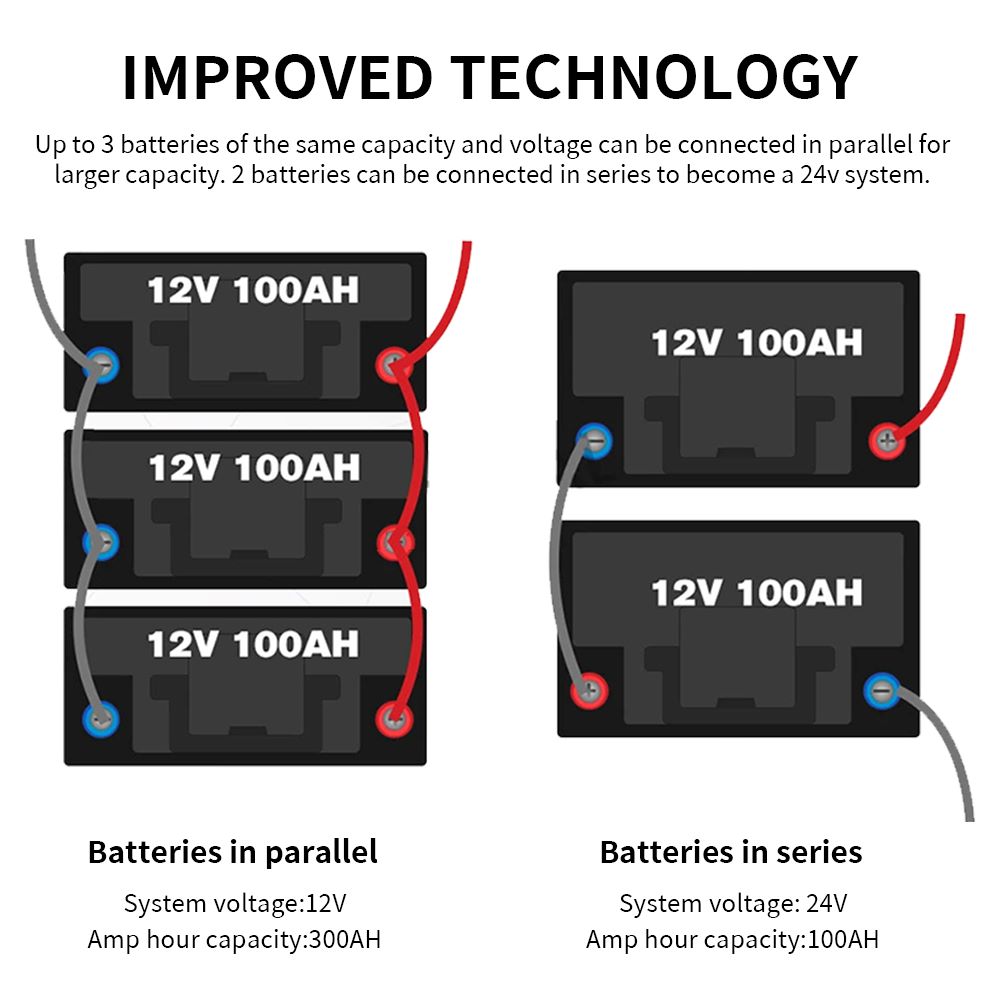
When connecting LiFePO4 batteries in series, make sure that all batteries have the same voltage rating and state of charge to prevent imbalances that could lead to performance issues or damage.
Always check each battery's voltage before connection; unequal voltages can cause overcharging in some cells and undercharging in others. This can greatly shorten battery life and may even result in failure.
Use a quality charger designed for the total voltage of the series configuration. Monitor the charging process closely, making sure no individual battery exceeds its maximum voltage, typically around 3.65V per cell.
Implement a battery management system (BMS) if possible to maintain balance and enhance safety during charging.
Although cold weather can greatly impact the performance of LiFePO4 batteries, taking the right precautions guarantees safe charging and ideal functionality.
When temperatures drop, the battery's ability to store and release energy diminishes, leading to potential damage if not managed properly. It's crucial to keep the battery above 35°F during charging.
Consider using heated battery kits designed for this purpose. These kits maintain optimal temperatures, ensuring safe operation.
Additionally, always refer to manufacturer guidelines for the specific charging parameters suitable for your battery.
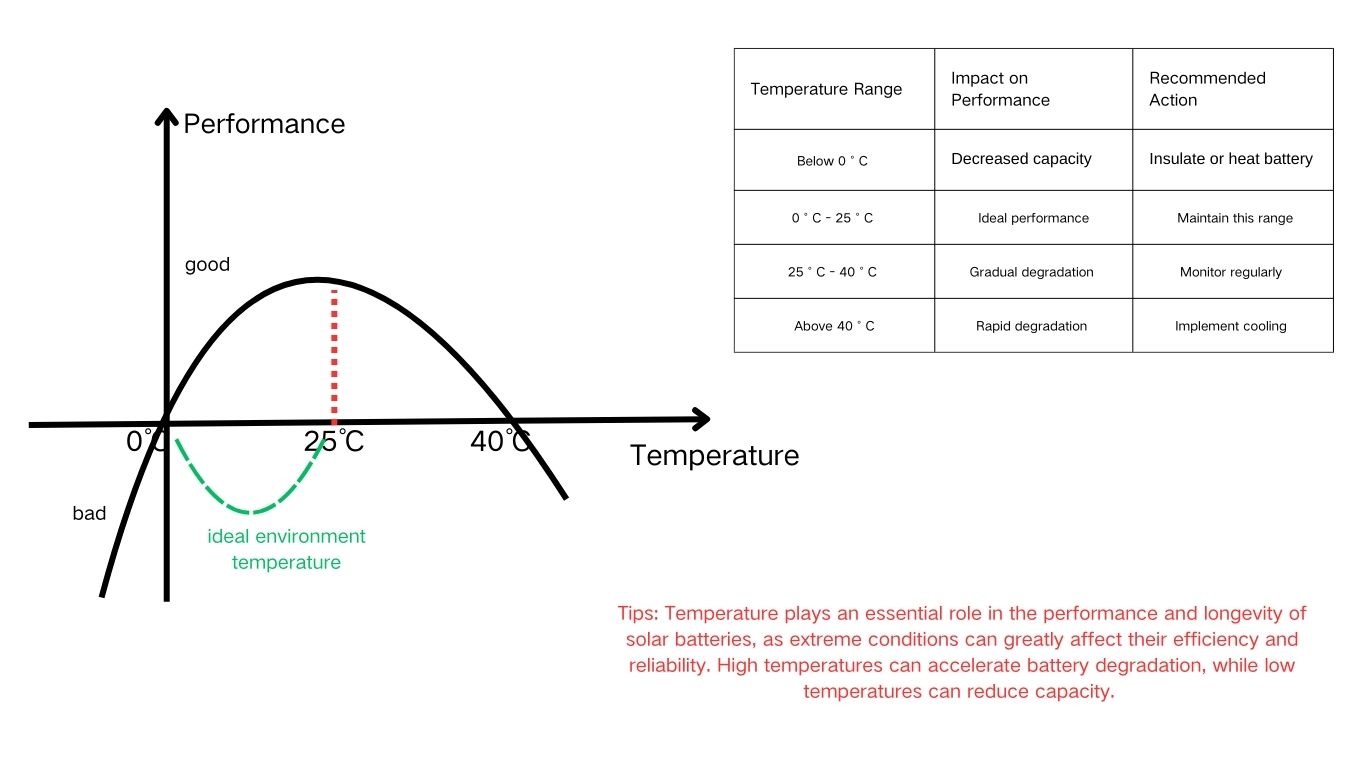
Are you wondering if your existing charger can safely charge lifepo4 batteries? Our suggestions is not recommended. Here are some points to note if you have to charge with existing charger.
First, check if your charger has the appropriate output voltage, typically between 14.0V and 14.6V for a 12.8V battery.
You’ll also need to verify it doesn’t have a repair or desulfuration function, as high pulse surge currents can damage LiFePO4 cells. Confirm if the charger includes battery voltage detection; this feature prevents charging if the battery is too low.
Also, inspect the charger’s condition and insulation for safety. If you’re unsure about the specifications, use a voltmeter to confirm.
Avoid chargers that trigger discharge protection without charging capability, as they can lead to complications during the charging process. Stay informed and cautious!
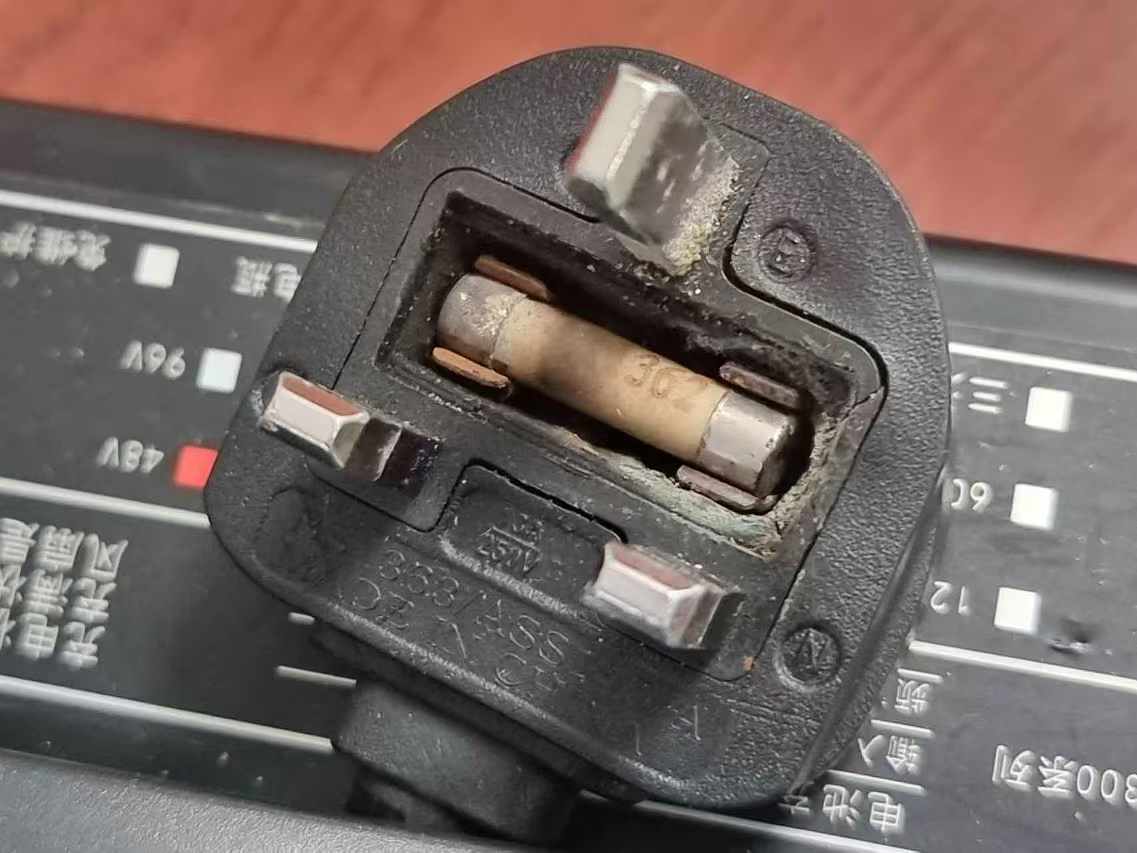
When charging different types of lithium iron phosphate (LiFePO4) batteries, like those used in forklifts, golf carts, or solar systems, you need to follow specific voltage and current guidelines.
Each application has unique requirements, so it's essential to make sure your charger is compatible and set to the correct parameters to avoid damage.
Always double-check the manufacturer's recommendations to guarantee safe and efficient charging.
Charging a forklift LiFePO4 battery requires careful attention to specific voltage parameters and charger compatibility to ensure peak performance and longevity. Always verify your charger aligns with the battery's specifications to avoid damage.
| Battery Type | Recommended Charge Voltage |
| 12V (12.8V) | 14.4V (14.0V-14.6V) |
| 24V (25.6V) | 28.8V (28.0V-29.2V) |
| 36V (38.4V) | 43.2V (42.0V-43.8V) |
| 48V (15S) | 54.0V (52.5V-54.7V) |
| 48V (16S) | 57.6V (56.0V-58.4V) |
Avoid using chargers with unsuitable functions, and always check the output voltage and current. Remember, Charge LiFePO4 batteries don’t need daily full charges, simplifying your maintenance routine.
While using a Golf Cart LiFePO4 battery can greatly enhance your vehicle's performance, it’s crucial to adhere to specific charging protocols to maximize its lifespan and efficiency.
Remember, no float or trickle charge is needed; these batteries do best with a straightforward charge cycle. If charging in cold weather, keep the battery above 35°F to prevent damage.
Following these guidelines will help you maintain control over your battery's performance and longevity.

To effectively charge a Solar LiFePO4 battery, you must guarantee that your charge controller is designed specifically for lithium iron phosphate technology, as traditional lead-acid controllers may not provide the correct charging parameters.
Monitor the charging process closely, as LiFePO4 batteries don't require float charging. Instead, focus on the bulk and absorption phases, allowing the current to decrease as the battery approaches full charge.
If you're using an inverter or solar system, confirm compatibility with your battery's specifications.
When it comes to safely charging Lithium Iron Phosphate (LiFePO4) batteries, taking certain precautions can prevent damage and enhance performance.
First, always use a charger specifically designed for LiFePO4 batteries, making sure it operates within the recommended voltage range.
Always use a charger designed for LiFePO4 batteries and adhere to the recommended voltage range to prevent cell degradation.
Monitor the charging process; don't leave batteries unattended for long periods. Confirm your charger has battery voltage detection to prevent overcharging.
When charging in cold weather, maintain ideal battery temperatures to avoid damage.
Finally, regularly inspect your charger for wear and verify all connections are secure.
After ensuring proper charging precautions, attention turns to the long-term storage of your Lithium Iron Phosphate (LiFePO4) batteries.
To maintain their health during storage, follow these guidelines:
To charge lifepo4 batteries, it's essential to reflect on the scenario and type of charger you're using.
Whether you're opting for an AC to DC charger, a solar system with a charge controller, or an alternator, each method has specific requirements and precautions.
Always verify compatibility and follow the recommended voltage and current settings to prevent damage and maximize battery lifespan.
Using an AC to DC charger can be a practical solution for charging LiFePO4 batteries, especially in applications like electric bikes or golf carts.
However, you must guarantee safety and compatibility. Here are some crucial checks to perform:
If you're shifting to a solar system for charging your LiFePO4 batteries, you need to confirm that your charge controller is compatible with their requirements.
Unlike traditional lead-acid systems, LiFePO4 batteries require a two-step charging process:
constant current followed by constant voltage. Set the charge voltage to 14.4V and avoid using float charging, as it’s unnecessary and can lead to battery damage.
Ascertain your solar charge controller can handle these specifications, particularly if it’s designed for lead-acid batteries. Also, monitor the charging conditions regularly to prevent over-voltage situations.
This diligence will help maintain the longevity and efficiency of you to charge LiFePO4 batteries while ensuring safe and effective charging.
Even though charge LiFePO4 batteries with an alternator can be effective, it requires attention to specific charging parameters that differ from those used for lead-acid batteries.
To guarantee safe and efficient charging, keep these points in mind:
In summary, charge LiFePO4 batteries safely requires adherence to specific methods and precautions. For instance, if you try charging in extreme temperatures, you risk damaging the battery or reducing its lifespan. Always use a compatible charger, follow the CC/CV method, and monitor the charging process closely. By understanding these principles and maintaining proper care, you can guarantee peak performance and longevity for your lithium battery. Stay vigilant to protect your investment and enhance safety.
Yes, you can overcharge your LiFePO4 battery if you exceed the recommended voltage range. But not recommend. This may lead to degradation or damage. Always monitor charging and use a compatible charger to maintain battery health and performance.
When it comes to charging LiFePO4 batteries, think of it as nurturing a delicate plant; keep the temperature between 32°F and 113°F. Charging outside this range risks damage, so maintain control for ideal performance.
You should charge your LiFePO4 battery whenever it drops to around 20-30% capacity. Regular charging extends its lifespan, but avoid overcharging; it can damage the cells and reduce performance considerably. Monitor your usage closely.
Certainly, you can harness the sun’s power to charge LiFePO4 batteries. Just make certain your solar setup matches the required voltage parameters; otherwise, you might end up with less energy than you bargained for. Stay vigilant!
Using the wrong charger can over-voltage your battery, leading to degradation or even damage. Always guarantee compatibility, as improper charging may cause safety hazards or void warranties. Stay vigilant and prioritize proper charging practices.


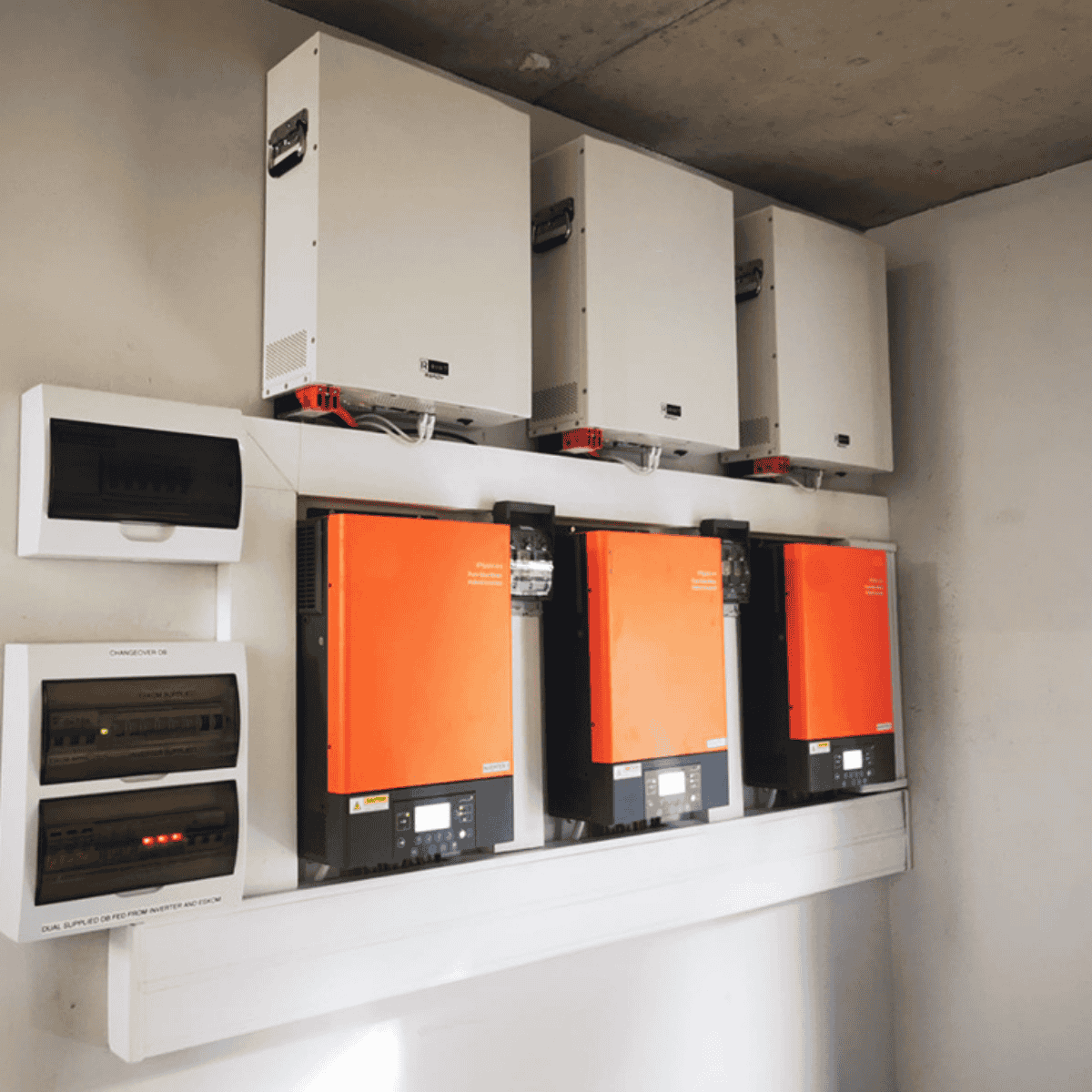

[…] Related article: https://gdleappower.com/how-to-safely-charge-lifepo4-batteries/ […]